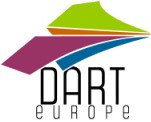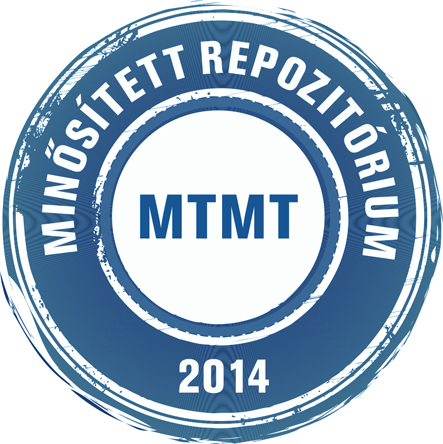M. Tóth Orsolya
Tissue acidosis associated with ischemic stroke to guide nimodipine delivery.
Doktori értekezés, Szegedi Tudományegyetem (2000-).
(2021)
Előnézet |
PDF
(disszertáció)
Download (1MB) | Előnézet |
Előnézet |
PDF
(tézisfüzet)
Download (340kB) | Előnézet |
Előnézet |
PDF
(tézisfüzet)
Download (431kB) | Előnézet |
Absztrakt (kivonat) idegen nyelven
Background: Ischemic stroke is a leading cause of death and disability worldwide. Yet, the effective therapy of focal cerebral ischemia has been an unresolved challenge. We propose here that ischemic tissue acidosis, a sensitive metabolic indicator of injury progression in cerebral ischemia, can be harnessed for the targeted delivery of neuroprotective agents. Ischemic tissue acidosis, which represents the accumulation of lactic acid in malperfused brain tissue is significantly exacerbated by the recurrence of SD events. Deepening acidosis itself activates specific ion channels to cause neurotoxic cellular Ca2+ accumulation and cytotoxic edema. These processes are thought to contribute to the loss of the ischemic penumbra. Importantly, acidosis in the ischemic penumbra may also be used to guide therapeutic intervention. Nimodipine, an L-type VGCC antagonist dilates cerebral arterioles, but its systemic administration may cause potential side effects (mainly hypotension). We have constructed chitosan nanoparticles as drug carriers, which release nimodipine in response to decreasing pH typical of cerebral ischemia. Here we have set out to evaluate this nanomedical approach to deliver nimodipine selectively to acidic ischemic brain tissue. Methods: Two sets of experiments are presented in this thesis. In Experimental Project I, nimodipine was applied in solution (100 μM), then global forebrain ischemia was induced in half of the animals by bilateral common carotid artery occlusion under isoflurane anesthesia. Functional hyperemia in the somatosensory cortex was created by mechanical stimulation of the contralateral whisker pad under α‐chloralose anesthesia. SD events were elicited subsequently by 1 M KCl. LFP and CBF in the parietal somatosensory cortex were monitored by electrophysiology and LDF. In Experimental Project II, nimodipine was associated with pH-sensitive nanoparticles in suspension. After washing the nanoparticle suspension with or without nimodipine (100 μM) on the exposed brain surface of anesthetized rats, both common carotid arteries were occluded to create forebrain ischemia. SDs were elicited by 1 M KCl to deepen the ischemic insult. LFP, CBF and tissue pH were recorded from the cerebral cortex. Microglia activation and neuronal survival were evaluated in brain sections by immunocytochemistry. Results: Nimodipine in solution attenuated evoked potentials and SD. In addition to the elevation of baseline CBF, nimodipine augmented hyperemia in response to both somatosensory stimulation and SD, the drug effect was particularly discernable under ischemia. Ischemia-induced tissue acidosis initiated nimodipine release from nanoparticles, confirmed by the significant elevation of baseline CBF. Nimodipine shortened the duration of both SD itself, and the associated tissue acidosis, moreover it enhanced the SD-related hyperemia. Chitosan nanoparticles did not activate microglia. Conclusions: The administered nanoparticles release nimodipine in acidic tissue environment, which reliably delineates sites at risk of injury. The data support the concept that tissue acidosis linked to cerebral ischemia can be employed as a trigger for targeted drug delivery. Nimodipine-mediated vasodilation and SD inhibition can be achieved by pH-responsive chitosan nanoparticles applied directly to the brain surface. Ultimately, this approach may offer a new way to treat stroke patients with the hope of more effective therapy, and better stroke outcome.
| Mű típusa: | Disszertáció (Doktori értekezés) |
|---|---|
| Publikációban használt név: | M. Tóth Orsolya |
| Magyar cím: | Nimodipin célzott bejuttatása szöveti acidózisra nyíló nanopartikulumokkal agyi iszkémiában |
| Témavezető(k): | Témavezető neve Beosztás, tudományos fokozat, intézmény MTMT szerző azonosító Farkas Eszter egyetemi docens, Orvosi Fizikai és Orvosi Informatikai Intézet SZTE / SZAOK 10028905 Bari Ferenc egyetemi tanár, Orvosi Fizikai és Orvosi Informatikai Intézet SZTE / SZAOK 10002086 |
| Szakterület: | 03. Orvos- és egészségtudomány > 03.01. Általános orvostudomány > 03.01.05. Idegtudományok (benne pszichofiziológia) > 03.01.05.10. Neurofiziológia 03. Orvos- és egészségtudomány > 03.01. Általános orvostudomány > 03.01.05. Idegtudományok (benne pszichofiziológia) > 03.01.05.13. Neurodegeneratív betegségek 03. Orvos- és egészségtudomány > 03.01. Általános orvostudomány > 03.01.06. Farmakológia és gyógyszerészet > 03.01.06.01. Neurokémia és neurofarmakológia |
| Doktori iskola: | Elméleti Orvostudományok Doktori Iskola |
| Tudományterület / tudományág: | Orvostudományok > Elméleti orvostudományok |
| Nyelv: | angol |
| Védés dátuma: | 2021. június 21. |
| Kulcsszavak: | terjedő depolarizáció, iszkémiás stroke, nanomedicina |
| EPrint azonosító (ID): | 10876 |
| A mű MTMT azonosítója: | 32850732 |
| doi: | https://doi.org/10.14232/phd.10876 |
| A feltöltés ideje: | 2021. máj. 05. 13:31 |
| Utolsó módosítás: | 2023. jan. 12. 15:33 |
| Raktári szám: | B 7045 |
| URI: | https://doktori.bibl.u-szeged.hu/id/eprint/10876 |
| Védés állapota: | védett |
Actions (login required)
 |
Tétel nézet |






